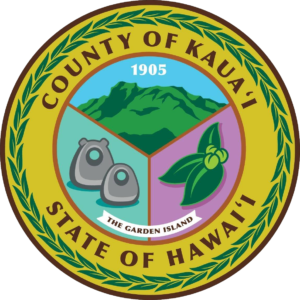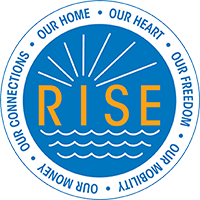Level 3 Electric Vehicle Charging Network Project
INTRODUCTION
The County of Kauai is excited to launch the Level 3 Electric Vehicle (EV) Charging Network Project. The purpose of this project is to expand the island’s public EV charging network, where there are currently no Level 3 EV charging stations.
The project will install five dual-plug 150 kW Level 3 EV Chargers at County-owned, strategically-placed sites:
- Bryan J. Baptiste Park
- Līhuʻe Civic Center
- Anne Knudsen Park
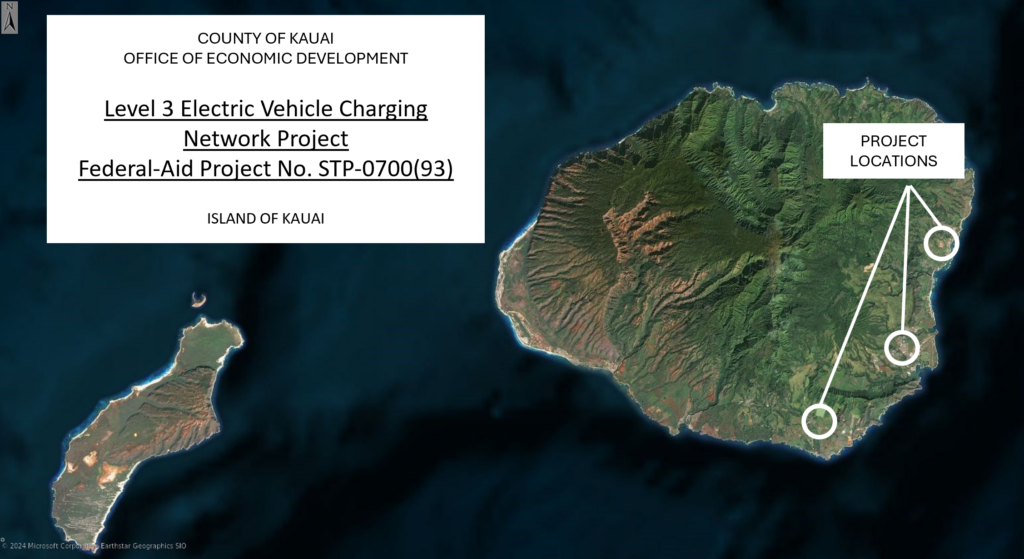
The County is coordinating with the Hawaii Department of Transportation, where HDOT will install Level 3 chargers on the North Shore and West Side through the National Electric Vehicle Infrastructure (NEVI) Project. The two projects complete a network and ensure island-wide coverage of public fast charging.
This project would not have been possible without Congressionally Directed Spending allocated by Senator Schatz and Senator Hirono, with matching support from the County of Kauai, Hawaii State Energy Office, and Ulupono Initiative.
PRELIMINARY SITE DRAWINGS
Bryan J. Baptiste Park
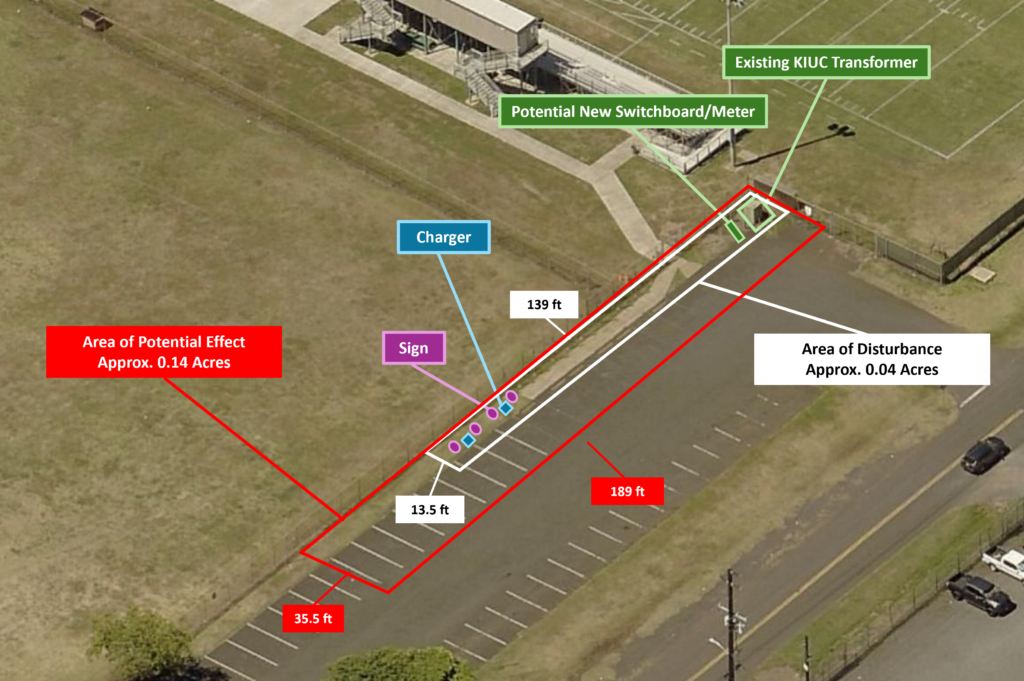
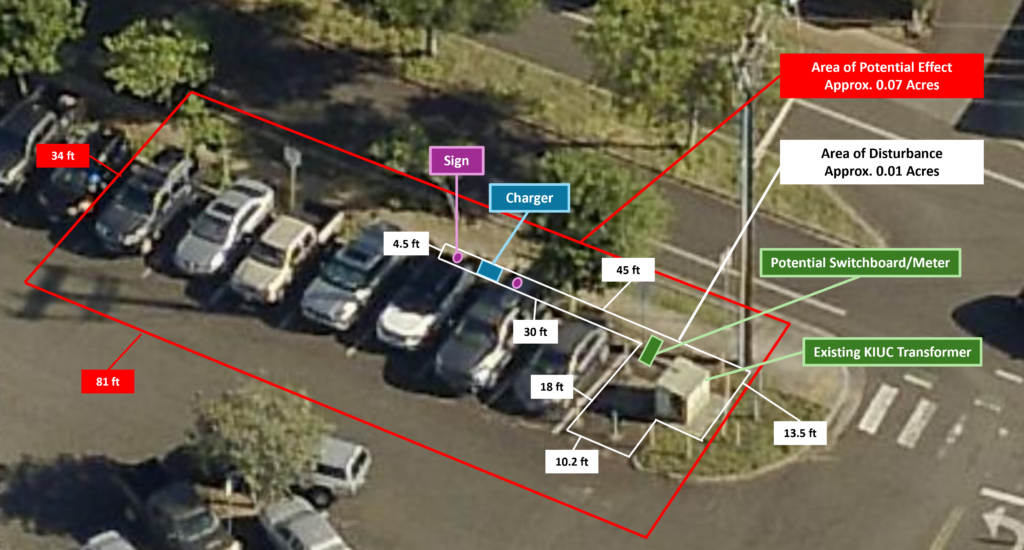
Līhuʻe Civic Center
Anne Knudsen Park
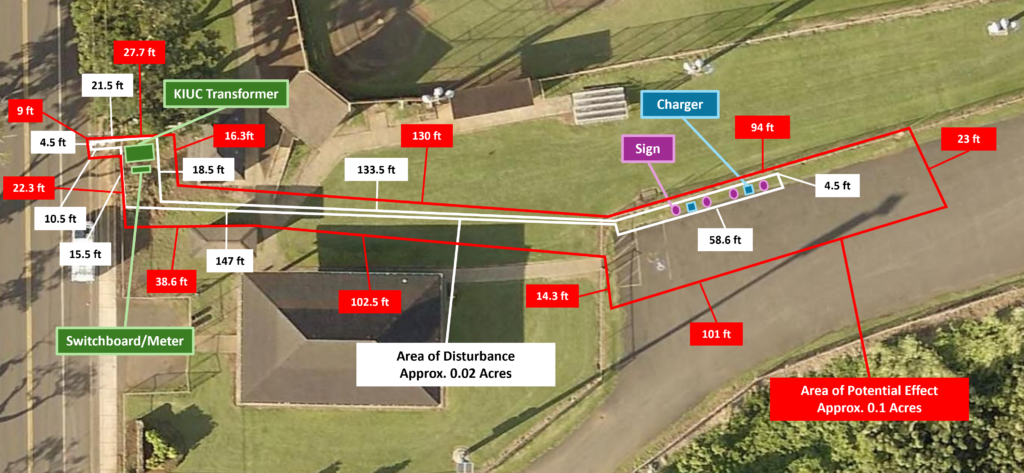
PROJECT TIMELINE
- Design
- Permitting
- Concrete pads
- Electrical infrastructure upgrades
- Trenching and running conduit
- Charger installation
SUPPORTING PLANS
COUNTY LED – 2021
The Kaua‘i CEDS update maintains the focus of the previous CEDS plans on diversifying Kaua‘i’s economy by focusing on 6 industry clusters – Food and Agriculture; Renewable Energy Sustainable Technologies and Practices; Science and Technology; Visitor Industry Management and Preservation; Health and Wellness and Arts and Culture.
The 2022-2026 CEDS plan will act as the roadmap and eventual framework for assessing and achieving progress toward the economic goals that the county’s stakeholders have collectively outlined.
Take advantage of new technologies to improve productivity in all sectors. Opportunities exist in:
• Transportation – shuttles; car sharing programs; improved use of public transportation (egs. free
bus rides); increased bike usage and electric vehicles.
STATE LED – 2021
The Hawai‘i Tourism Authority (HTA), in partnership with the counties and the respective visitor bureaus, developed community-based Destination Management Action Plans (DMAPs) that aim to rebuild, redefne and reset the direction of tourism over a three-year period. The focus is on stabilization, recovery, and rebuilding to the desired visitor industry for each island. The DMAPs identify areas of need as well as actionable solutions for enhancing the residents’ quality of life and improving the visitor experience across the islands.
Action E: Encourage low-impact green rides to improve the visitor experience, reduce island trafc, increase small business opportunities, and meet climate action goals.
E.3 Meet with and discuss with rental car agencies and car sharing companies to provide electric vehicles, and increase incentives to install EV (Electric Vehicles) chargers at the airport and at potential high-use car share locations.
COUNTY LED – 2018
The plan’s general framework focuses on how the island can manage growth and achieve its four main goals of sustainability, health, uniqueness, and equity.
“In order to support the General Plan’s greenhouse gas reduction policy, Kauaʻi must reduce ground transportation emissions by 100% by 2045.” (Pg. 196)
ES 2.A.3 Accelerate the transition to alternative, carbon-free fuels in the ground transportation sector with regulations and policies that support electric vehicle adoption and other alternative fuel infrastructure.
COUNTY LED – 2017
In 2017, all four Mayors in the State of Hawaiʻi stood on the Hōkūleʻa and committed to 100% renewable ground transportation by 2045, including transitioning the County fleets by 2035.
CONTACT US
For any inquiries, please contact Christina Kaser:
Email: ckaser@kauai.gov
Phone: (808) 241 – 1950

